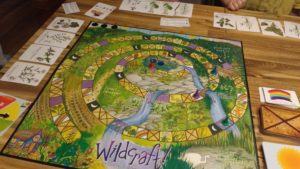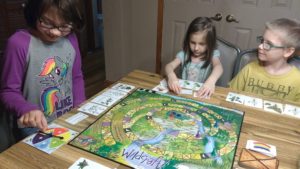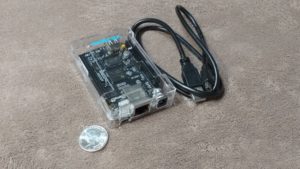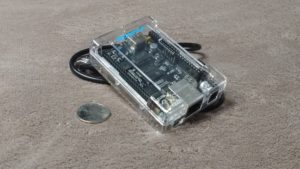Before we get to the meat of today’s post, I wanted to let you all know that yesterday my email subscribers received the first weekly email only content. It’s something that was sent directly via my list provider, and is not on the website anywhere. If you aren’t subscribed, you might be missing out. Anyway… onward to today’s post!
Over the holiday season, our household received several new games as gifts. Among them, we got Mastermind (similar to battleship, but not really,) ION (card and dice game,) Settlers of Catan (board game,) and a few video games for the kids. I received the elusive NES Classic gaming console I lamented not being able to purchase on launch day, as well.
All of these games gave me the idea that I should cover some of our collection of physical games (board, card, and dice,) over the next several Fridays. Instead of starting with the ones we received THIS year, I thought I’d start with one that is probably a lot less known. I have a thing for “underdogs,” and this game kind of fits that bill.

The game is called “Wildcraft!” and is a cooperative board game. It is designed for 2 to 4 players. Each player uses a token like the ones in the game “Sorry!” to represent their progress along the board path. There are also black and blue coin shaped tokens that are used to represent the “passing of the sun” and “baskets of huckleberries” respectively.
Three decks of cards are used. One deck contains various plants. One deck contains various “trouble” cards. One deck contains a stack of “cooperation” cards. A spinner with 6 possible outcomes is included.
The premise is to leave Grandma’s house, travel the spiraling path up the hill to the huckleberry patch, gather two baskets of huckleberries per player, then return back down the path to Grandma’s house before the sun sets. The path has a couple of spots that let you jump gaps bi-directionally, and a couple that let you jump gaps in one direction only. Each spot on the path represents either a “rest” area, a “moon,” a “trouble spot,” a “harvest spot,” or a “cooperation spot.” Across one side of the board are sections showing the sun passing across the sky.
If you land on a “moon,” you place a black token on the next free “sun movement” spot. This is the only antagonist in the game. If all of those sun progress spots are filled up before the last player makes it back to Grandma’s house, everyone loses. The more players there are, the longer a game takes, but the more likely the team is to lose, as well.
If you land on a “cooperation” block, (represented by a rainbow,) you draw a cooperation card. This card can either be used immediately to pull the person furthest behind up to your position, or it can be saved to aid another player later.
If you land on a “trouble” block, you draw a trouble card. This could be something as simple as just being “Hungry” or it could be that you got poison ivy, for example. The trouble card does nothing to hinder your progress, but “fixing” an ailment lets you move to the next rest spot, so there is incentive to do so.
If you land on a “harvest” block, you draw a plant card. These are the cards that help you fix the ailments from trouble cards. If you have an ailment, and a plant card that fixes it, you discard both, move to the next rest spot available, and end your turn.
Rest blocks do nothing.
The “1” on the spinner also has a rainbow. If you spin a “1” you draw a cooperation card, and the rules for this are the same as if you land on a rainbow spot on the board.
Once a player reaches the berry patch, they stop spinning on their turn, and instead collect huckleberry bucket tokens. After the correct number of berry buckets are gathered (2 per player overall, so 4 if there are 2 players, 8 if there are 4,) the player spins and begins working their way back down the hill. If a player passes someone on their way UP the hill, that player is now able to turn around and start back down.

This game is educational and a TON of fun. Game play can take anywhere from about an hour to several hours, depending on number of players and how many times people hit the “short cuts” in the wrong direction. It’s great for an afternoon of quality time with friends and family.
The game can be found HERE.
They have a Twitter and Facebook page, if you want to check out their feed.

